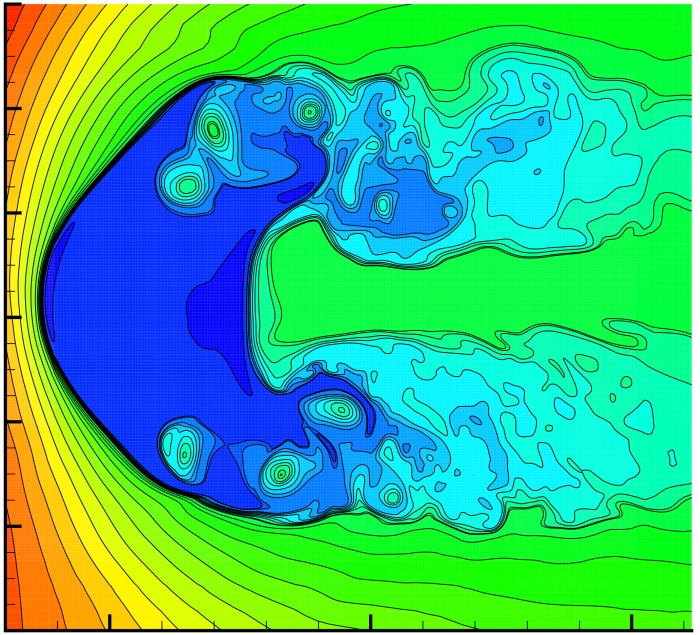The Solar System exists in a bubble.
Wind and radiation from the Sun stream outwards, pushing out into interstellar space. This creates a boundary of solar influence, within which the objects in the Solar System are sheltered from powerful cosmic radiation.
It's called the heliosphere, and understanding how it works is an important part of understanding our Solar System, and perhaps even how we, and all life on Earth, are able to be here.
"How is this relevant for society? The bubble that surrounds us, produced by the Sun, offers protection from galactic cosmic rays, and the shape of it can affect how those rays get into the heliosphere," says astrophysicist James Drake of the University of Maryland.
"There's lots of theories but, of course, the way that galactic cosmic rays can get in can be impacted by the structure of the heliosphere – does it have wrinkles and folds and that sort of thing?"
Since we're inside the heliosphere, and its boundary is not actually visible, figuring out its shape is not exactly easy. But it's not impossible. The two Voyager probes and New Horizons are three spacecraft that have traveled to the far reaches of the Solar System; in fact, the Voyager probes have even traversed the boundary of the heliosphere, and are currently making their way through interstellar space.
With data from these probes, scientists determined last year that the heliosphere could be shaped a bit like a weird cosmic croissant. Now, they have figured out how: neutral hydrogen particles streaming into the Solar System from interstellar space likely play a crucial role in sculpting the shape of the heliosphere.
The team set out to investigate the heliospheric jets. These are twin jets of material that emanate from the Sun's poles, shaped by the interaction of the solar magnetic field with the interstellar magnetic field. Rather than shooting straight out, though, they curve around, pushed by the interstellar flow – like the points of a croissant. These are the Solar System's tails.
 A reconstruction of the heliosphere showing the jets. (M. Opher/AAS)
A reconstruction of the heliosphere showing the jets. (M. Opher/AAS)
These are similar to other astrophysical jets observed in space, and like those other jets, the Sun's jets are unstable. And the heliosphere, shaped by the Sun, also appears to be unstable. The researchers wanted to know why.
"We see these jets projecting as irregular columns, and [astrophysicists] have been wondering for years why these shapes present instabilities," explains astrophysicist Merav Opher of Boston University (BU), who led the research.
The team performed computational modeling, focusing on neutral hydrogen atoms – those that carry no charge. We know these stream through the Universe, but not what effect they could have on the heliosphere. When the researchers took the neutral atoms out of their model, suddenly the solar jets became stable. Then they put them back.
"When I put them back in, things start bending, the center axis starts wiggling, and that means that something inside the heliospheric jets is becoming very unstable," Opher says.
According to the team's analysis, this occurs because of the interaction of the neutral hydrogen with the ionized matter in the heliosheath – the outer region of the heliosphere. This generates a Rayleigh-Taylor instability, or an instability that occurs at the interface between two fluids of different densities when the lighter fluid pushes into the heavier one. In turn, this produces large-scale turbulence in the tails of the heliosphere.
It's a clear and elegant explanation for the shape of the heliosphere, and one that could have implications for our understanding of the way galactic cosmic rays enter the Solar System. In turn, this could help us to better understand the radiation environment of the Solar System, outside Earth's protective magnetic field and atmosphere.
"The Universe is not quiet. Our BU model doesn't try to cut out the chaos, which has allowed me to pinpoint the cause [of the heliosphere's instability]…. The neutral hydrogen particles," Opher says.
"This finding is a really major breakthrough, it's really set us in a direction of discovering why our model gets its distinct croissant-shaped heliosphere and why other models don't."
The research has been published in The Astrophysical Journal.
#Space | https://sciencespies.com/space/astronomers-have-discovered-why-the-solar-system-might-be-shaped-like-a-croissant/
No comments:
Post a Comment